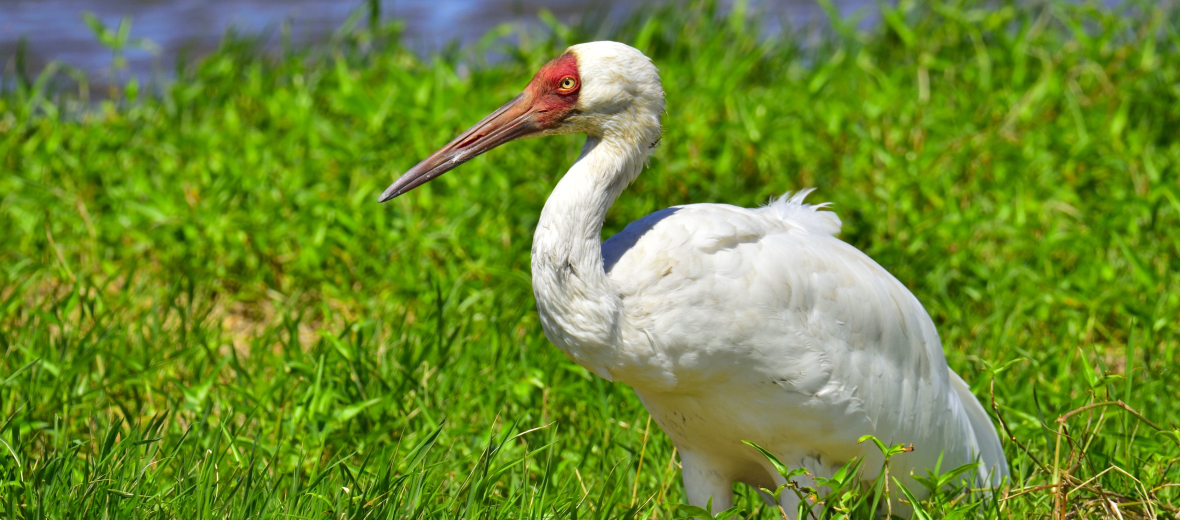
The Siberian crane, aka Siberian white crane or snow crane, have 3 populations: western, central, and eastern. 1 population overwinters in Iran on the Caspian sea’s southern coast, then breeds in Russia’s northwest. Populations also dwell in Yakutia in arctic Russia to western Siberia. Others live in northeast Siberia and migrate down to China to the Yangtze River area. Still another breeds in western Siberia and migrates to Rajasthan in India, primarily in the Keoladeo National Park. These birds face many threats, like habitat loss and destruction at the hands of residential & commercial development, agriculture, and dam construction; human based recreational activities; overfishing; hunting; trapping; pollution; and climate change. As a result, the Siberian cranes are listed as Critically Endangered by the IUCN. Their numbers are also decreasing.
First the Stats…
Scientific name: Leucogeranus leucogeranus
Weight: Up to 19 lbs.
Length: Up to 4.7 feet
Wingspan: Up to 8.5 feet
Lifespan: Up to 83 years
Now on to the Facts!
1.) Siberian cranes perform the longest migration of any known crane species.
2.) They prefer bogs and marshlands, with a preference to taiga biogeographic, lowland tundra, and taiga & tundra transitional habitats.
3.) A group of cranes is called a herd, sedge, or seige.
4.) These aquatic birds are territorial and non-social.
5.) The Siberian crane is diurnal (active during the day).
But wait, there’s more on the Siberian crane!
6.) At night, they will stand on 1 leg and tuck their head into the feathers behind their shoulder.
7.) When excited, they will bow their head, leap, and dance about.
Did you know…?
It is estimated that there are only around 4,000 wild individuals remaining, to date.
8.) These birds feed on rhizomes, roots, sedge sprouts, seeds, and other various plants. They also feast on insects, mice, rats, fish, and other small critters.
9.) Siberian cranes are monogamous (mate for life).
10.) Females lay up to 2 eggs each season.
But wait, there’s still more on the Siberian crane!
11.) Both parents take part in egg incubation duties.
12.) Eggs hatch in up to 29 days.
Did you know…?
A Siberian crane named Wolf got the record for longest lived crane, as it lived for 83 years!
13.) The chicks are independent in up to 75 days.
14.) These cranes are capable of standing in water that is near freezing, for hours. This is possible due to the fact that they can restrict the blood vessels in their feet, limiting blood flow.
15.) Threats are met with the snapping of their bill and kicking with their feet.
16.) They migrate upwards of 3,728 miles each season!
Now a Short Siberian Crane Video!
Be sure to share & comment below! Also, check out the Critter Science YouTube channel. Videos added regularly!
Want to suggest a critter for me to write about? Let me know here.



